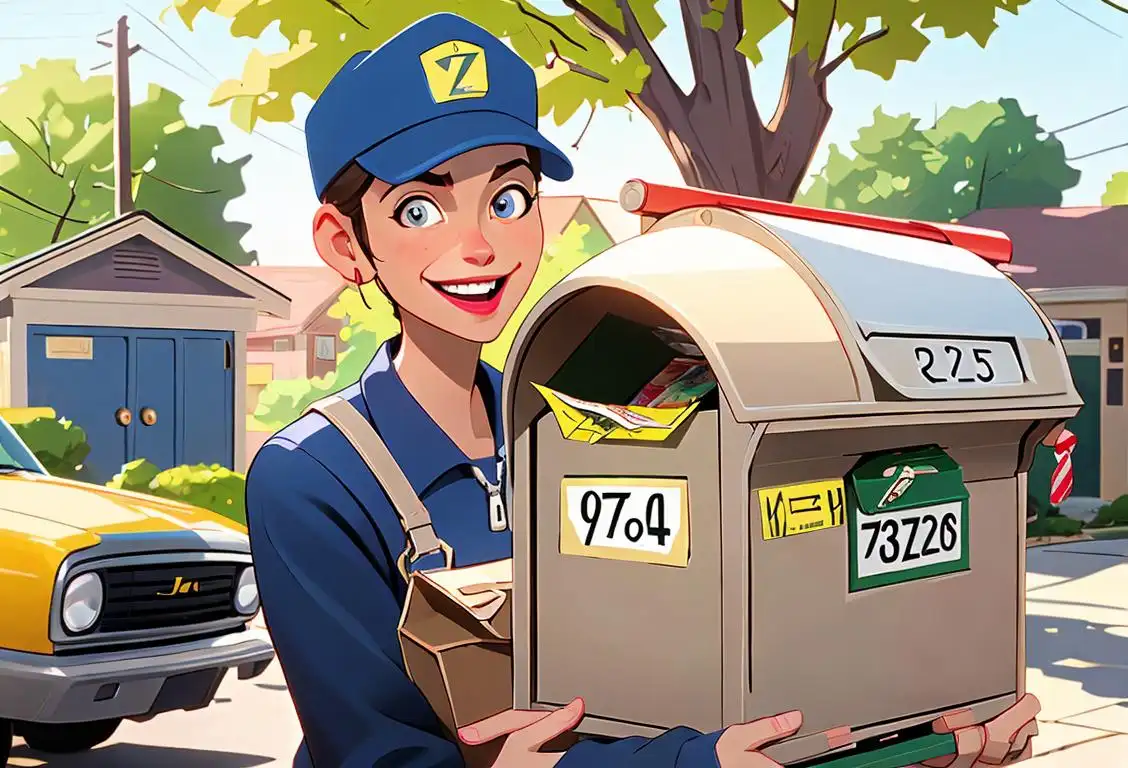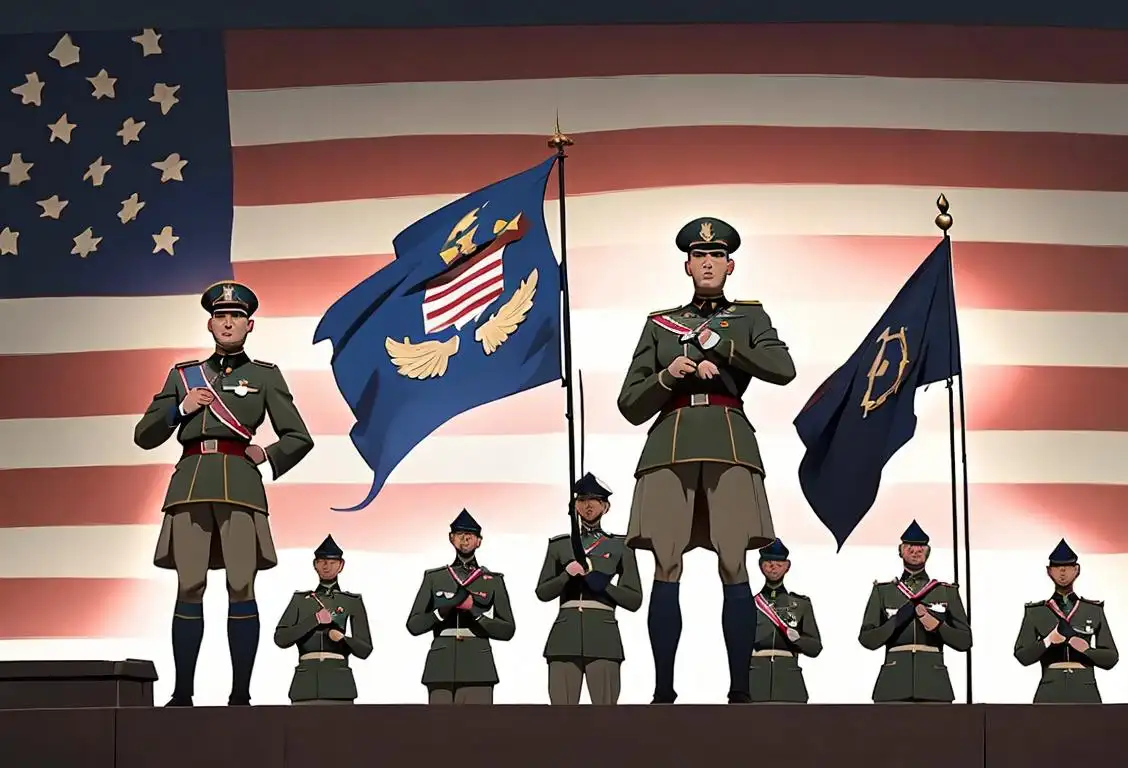National Zip Code Day

Hey there, zip code enthusiasts! Get ready to celebrate National Zip Code Day, a day dedicated to the unsung heroes of reliable mail delivery and package tracking. Whether you're wondering why your Aunt Mabel's birthday gift arrived two weeks late or you're just excited about organizing your stamp collection, this is the perfect day to appreciate the magic of those little numbers that keep our postal system organized. So, let's dive into the curious history of zip codes and celebrate all things postal!
When is Zip Code Day?
It's national zip code day on the 1st July.
The Birth of the Zip Code
Back in ancient times, when humans relied on carrier pigeons and smoke signals to communicate, the delivery of mail was often a bit of a wild goose chase. You'd send a message to your cousin in a different state, and weeks later, you'd receive an angry reply about how your message was shredded by a flock of mischievous seagulls. Thankfully, in the 1960s, the United States Postal Service (USPS) came up with a brilliant solution: the zip code!
The zip code, short for Zone Improvement Plan code, was introduced on July 1, 1963. It was a groundbreaking system that divided the entire country into specific geographic areas, each marked by a unique five-digit code. This made it easier for mail carriers to sort and deliver mail, ensuring that Aunt Mabel's gift no longer suffered a detour through the Bermuda Triangle.
Unraveling the Zip Code
Zip codes are like little puzzle pieces that fit together to create the bigger picture of efficient mail delivery. The first digit of a zip code represents a broad region, while subsequent digits further narrow down the location. The last two digits zero in on specific streets and addresses. It's like a game of postal Sudoku!
For example, if you come across a zip code that starts with a '0,' you can bet your bottom dollar that it represents New England. If it starts with a '9,' you're shivering your timbers in sunny California! So, the next time you receive a letter, take a moment to appreciate the intricate dance of digits that facilitated its timely arrival.
Celebrating National Zip Code Day
While celebrating National Zip Code Day may not involve wild parties or fireworks shows, there are still plenty of fun ways to honor this ingenious system. Here are a few ideas to get you started:
- Send Snail Mail: Grab some festive stamps and surprise your loved ones with handwritten letters or postcards. Slap on those zip codes and make your mail carrier's day a little brighter!
- Food Delivery Extravaganza: Order food from various zip codes and challenge yourself to taste the flavors of different regions without leaving your couch. Just make sure to tip your delivery person well!
- Zip Code Trivia: Gather your friends for a zip code-themed trivia night. Test your knowledge of postal codes from around the country and see who emerges as the ultimate zip code guru.
Did You Know?
Did you know that the first-ever zip code in the United States was assigned to the city of Groom, Texas? Their zip code, 79039, holds the prestigious title of being the very first code in the nation. Talk about a small town with a big impact!
History behind the term 'Zip Code'
1943
The Birth of the Zone Improvement Plan.
In 1943, a postal survey of the United States revealed the need for a more efficient mail delivery system. To address this issue, the United States Post Office Department introduced a new system called the Zone Improvement Plan, or ZIP for short. The purpose of ZIP was to divide the country into specific delivery zones to facilitate faster and more accurate mail sorting and delivery.
1963
Expansion of ZIP codes.
The ZIP code system was further developed in 1963 under the leadership of Robert Moon, a postal inspector. The system expanded to include five-digit ZIP codes to provide even finer geographical targeting for mail delivery. These five-digit ZIP codes were assigned to every address across the United States.
1983
ZIP+4 Implementation.
In 1983, the ZIP+4 system was introduced to provide even more precise mail sorting. The ZIP+4 system added a hyphen and four additional digits to the existing five-digit ZIP code. These extra digits represented specific geographical areas within a ZIP code, such as a city block or a range of addresses.
1993
ZIP code automation and the Intelligent Mail Barcode.
To further improve mail processing, the United States Postal Service (USPS) introduced automation technology in 1993. This automation allowed mail pieces to be scanned and processed more efficiently. As part of this upgrade, the USPS created the Intelligent Mail Barcode (IMb). The IMb incorporates the ZIP code information and other tracking details, enabling faster and more accurate mail sorting and delivery.
2007
ZIP+4 redesign and implementation of Delivery Point Barcodes (DPBs).
In 2007, the USPS redesigned the ZIP+4 system to incorporate Delivery Point Barcodes (DPBs) into the barcode structure. DPBs provide even more specific delivery information, including individual house or building numbers, within a ZIP+4 code. This enhancement further streamlined the mail handling process and improved delivery accuracy.
Did you know?
Did you know that the first-ever zip code in the United States was assigned to the city of Groom, Texas? Their zip code, 79039, holds the prestigious title of being the very first code in the nation. Talk about a small town with a big impact!Tagged
food fun loved onesFirst identified
1st July 2018Most mentioned on
1st July 2020Total mentions
49Other days
Biscuit Day
Cheese Lovers Day
Cheese Pizza Day
Agriculture Day
Bacon Day
Medal Of Honor Day
Pumpkin Day
Foundation Day
Guac Day
Drink A Beer Day









